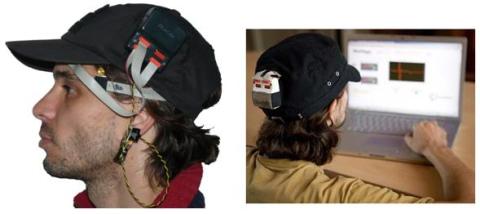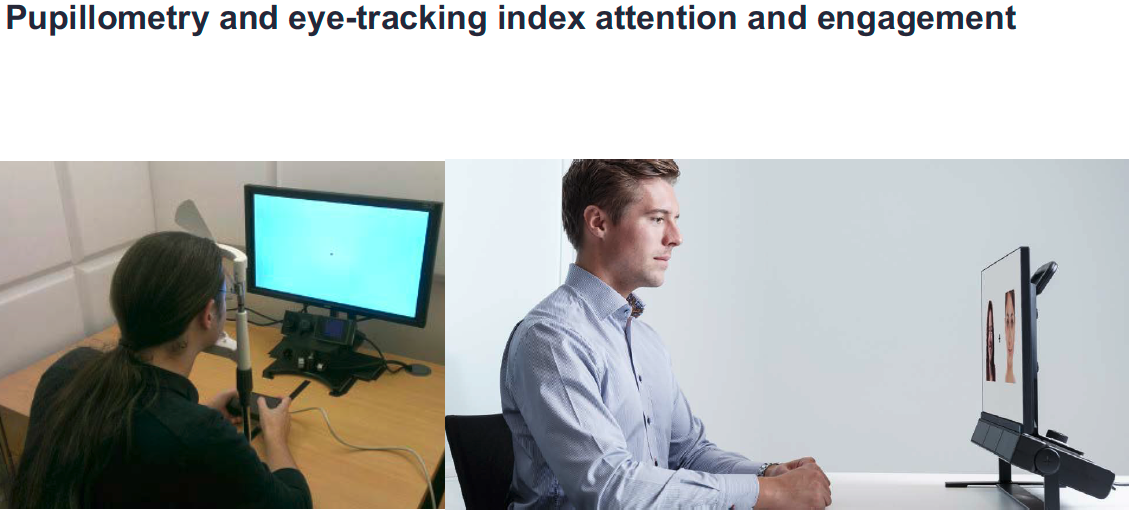What if you could predict how successful a campaign would be before you launched it? What if you knew how consumers truly felt about your brand, and not just how they say they feel? What if you could accurately measure how much a campaign is actually resonating with your target audience? All of this is becoming more possible by the day as the field of neuromarketing continues to expand.
MOD, the Philadelphia-based human experience agency, is just one such company in the space. They use high-tech medical equipment such as EEG sensors and heart monitors, as well as their own proprietary patents and data analysis techniques, to collect what they call unbiased Emotional DataTM. PM360 spoke with MOD Chief Creative/Neuromarketing Officer Nina Stanley about their approach to neuromarketing, what makes it more effective than traditional market research techniques, and what is on the horizon for this emerging field.

PM360: What is your process for collecting this Emotional DataTM?
Nina Stanley: Emotional DataTM is our mix of neurobiological, physiological, and behavioral data collection—all of which give you clues in their own unique way. The different types of testing for this data requires different methods of testing. For instance, in neurobiological we’re using EEG to monitor brainwave patterns, peaks, valleys, etc., or sMRI where we are looking at brain scans and actual blood flow to different parts of the brain that are responsible for different emotional responses. For physiological and behavioral we are going with pupil dilation, heart rate, skin conductance, eye tracking, facial coding, implicit association, etc. We take each one of those results and then analyze it collectively and see how an individual is actually emotionally feeling towards whatever stimuli we’ve presented them with.
What are you trying to measure or see through this testing in order to determine if a campaign is resonating with the audience?
It’s not news that everybody is trying to make an emotional connection. And I have been saying for years, but how do you really know if you’re making an emotional connection when prior to neuro testing the only reliable “source of data” you had was question and answer in a traditional focus group? Traditional focus groups are rift with bias and misunderstanding and people just honestly not wanting to tell you how they really feel, or not knowing how they really feel. You just don’t have dependable data coming out of that focus group. Our testing differs in that we take a more scientific approach to see your initial emotional response. We are looking at the blood flow to the different parts of the brain to see what’s happening in the subconscious—because before you even consciously know that you’ve made a decision, your brain has made it for you.
For example, if I show you a commercial spot that my company has produced while wearing an EEG sensor, I can tell pique of interest at different parts of the commercial without even asking you a question of whether you were interested or not. Or, if I showed it to you while you were in an MRI machine, I can see exactly what part of your brain was engaged at what time during the commercial. So if your reward system was engaged at one point of the commercial then I know it resonated with you and you got this release of dopamine.
Are you always market testing different versions of a campaign or commercial after they are created, or are you doing anything pre-creation to see what ideas might work best?
It depends on what questions we’re trying to answer. If we’re trying to determine if brand loyalty fosters brand love and in turn fosters sales, then that would be more question and answers about a specific brand. For instance: What does the individual feel about the brand purpose? Does it align with their values? Those kinds of things. But if we’re looking to understand how a new movie trailer may resonate with an audience then we want to make sure there is cross-brain correlations between our test group. Studies show that cross-brain correlation actually predicts thought process sales because if you have a group of people that are responding positively to the same stimuli at the same time, there is heightened remembrance and then that leads to higher thought process sales.
Is the recruiting process for test subjects different from what is done for a typical focus group?
The recruiting process is very similar in that we identify our hyper segments, who we want to reach with why, how, what our differentiator is, and then just trying to find that person and putting them in as natural setting as possible. Whereas focus groups put people in a windowless room with a monitor they don’t have a relationship with, we can give people EEG sensors that basically look like a baseball hat and send them into a retail environment and have them walk around the store and just experience it.
 Or hop on social media and look at a pre-curated feed and monitor their emotional responses. For instance, we could just use eye tracking and biometric data to understand consumer engagement with Instagram posts in order to see how we could tailor imagery and messaging to a consumer base that would result in increased engagement, increased likes, and click-throughs to sales.
Or hop on social media and look at a pre-curated feed and monitor their emotional responses. For instance, we could just use eye tracking and biometric data to understand consumer engagement with Instagram posts in order to see how we could tailor imagery and messaging to a consumer base that would result in increased engagement, increased likes, and click-throughs to sales.
 What kind of results have you seen from using your neuromarketing techniques for clients?
What kind of results have you seen from using your neuromarketing techniques for clients?
We’re seeing about a 10% to 12% increase in ROI with the campaigns that we are integrating neuro testing as opposed to not.
Have you done any work specifically in the pharma industry?
Yes, a Fortune 500 Pharmaceutical company had a new delivery system for a product that wasn’t performing as well as they anticipated. We took our process and applied it to that in order to discover why it wasn’t working and what people didn’t like about it. We found, through narrow testing behavioral analysis as well as our consumer research, the trigger points for what consumers were feeling negatively, and then we altered that to remove the friction. We did that through design of the product as well as improved educational materials on how to us the device.
What about in terms of using this for pharma marketing? Can you predict how well a campaign will result in sales as well as you can in retail marketing where a consumer can purchase a product directly as opposed as having to go through a doctor?
Absolutely. What we have to recognize and remember is that regardless of the marketing type, pharma versus retail—whatever content is being communicated—we’re talking to a human. And neuromarketing allows us to really tap into and speak to that. In the end, if you can know what somebody is thinking before they know what they’re thinking—if you already have the answer before you ask the question then how could it not be successful regardless of the industry.
In terms of neuromarketing overall, this is a growing field, but it is still relatively new. What do you think lies ahead for this field? What can we expect next?
I think it’ll be refining the apparatus that’s used to track the data. That would be ever-evolving. For instance, in EEG data collection we’ve gone from silicon caps with 300 neural sensors on it to now a baseball cap or even a headband. So the potential for understanding emotional responses in real-world settings is just going to get better and better as the technology becomes better, and you don’t feel encumbered by the technology. It will just continue to become more and more natural, which will result in better and better data.









